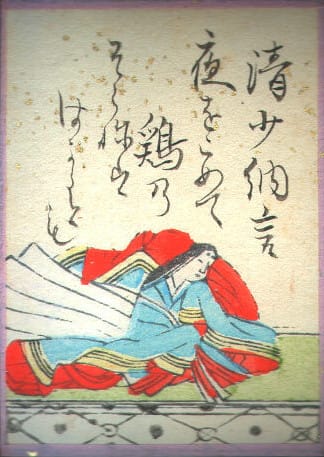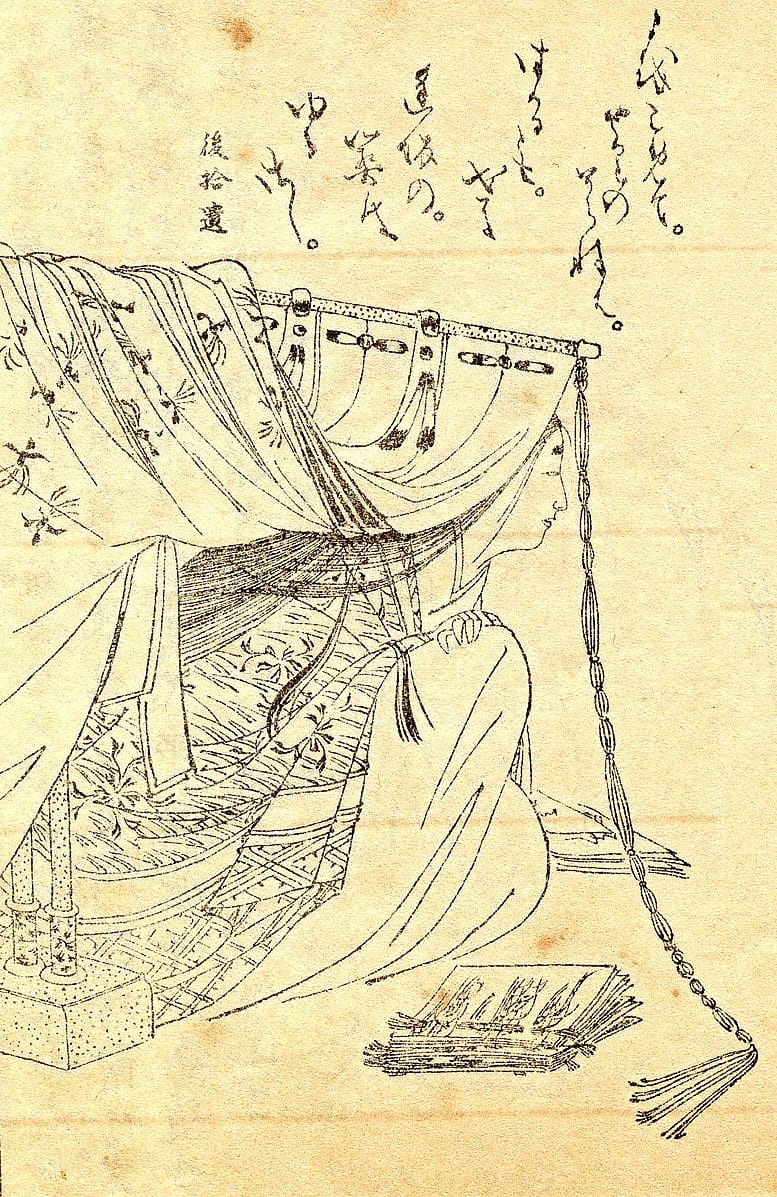The Pillow Book of Sei Shonagon - Reprising an Early Review
In 2018, I wrote a blog post reviewing The Pillow Book by Sei Shonagon, and it's been one of my top five visited pages on my website. I'm reprising it here after minimal updates.

In 2018, I wrote a blog post reviewing The Pillow Book by Sei Shonagon, and it's been one of my top five visited pages on my website. I'm reprising it here after minimal updates.
The Pillow Book of Sei Shonagon (Penguin Classics, 2006) is a fascinating look at Japanese court culture during the 11th-century Heian period (794 to 1186).
While others may be more familiar with Murasaki Shikibu’s The Tale of Genji as an example of classic Japanese literature of the time, I chose The Pillow Book instead – I always lean towards bucking the trend, and I was intrigued by what I had read of Sei Shonagon’s attention to detail, unflinching honesty, and acerbic wit in her quest for the perfect comeback.
It’s been said that Murasaki Shikibu and Sei Shonagon were rivals in the same literary circle and that the former found Sei Shonagon conceited. And while The Tale of Genji is a long and layered tale of politics, love, and loss, The Pillow Book is less serious – and to me, more telling – and full of Sei Shonagon’s observations, delights, and criticisms. Despite (or perhaps because of) her often sentimental observations, Sei Shonagon would’ve been brought into court for her knowledge of literature and poetry and her writing skills; according to Ohio State University professor Ryan Schultz, she brought a level of “sophistication and elegance” to the court, which were cornerstones of court culture during this period.
According to Dr. Meredith McKinney, an expert in Japanese literature and translator of this edition, Sei Shonagon might have been born around 966 and the last known reference to her was in 1017. She was a member of the court of Empress Consort Teishi (Sadako), where she served as a gentlewoman or lady-in-waiting beginning around 993 until Teishi’s death in 1000.

While specific details about Sei Shonagon and her book are difficult to confirm, it is believed she completed the book around 1002. There are several editions of the book; it has been copied and recopied multiple times. I read the Penguin Classics edition, which includes an informative introduction written by Meredith McKinney and is full of notes throughout. Well-researched and thorough, it also includes appendices such as a glossary as well as explanations of colors and clothes, social statuses, and more.
The Pillow Book is akin to a diary; Sei Shonagon mostly tells us stories of her daily life, gossips about her peers, and comments on fashion and the seasons. It provides a perspective on imperial culture in all its luxury, privilege, and poetry and is considered a masterpiece of Japanese literature. According to Sei Shonagon, the book was supposed to have been kept private but started to circulate among the court members when it was discovered after she accidentally left it out on a mat one day around 996.
I have never read a book quite like this before. While I enjoyed it for its unique content and perspective, it lacks the cohesion I was used to as it jumps around throughout time periods, thoughts, and miscellany. At times, Sei Shonagon uses the pages to list examples of seemingly arbitrary topics of her choice, sometimes as ordinary as naming peaks, plants, or bodies of water, but at other times more thoughtful. Here are some of my favorites:
Though it’s the same it sounds different ~ The language of priests. Men’s language. Women’s language.
Rare things ~ A pair of silver tweezers that can actually pull out hairs properly. A person who is without a single quirk. Two women, let alone a man and a woman, who vow themselves to each other forever, and actually manage to remain on good terms to the end.
Times when someone’s presence produces foolish excitement ~ A mother who’s pampering and praising her spoilt child, who is actually nothing out of the ordinary. The little introductory cough you give when you’re about to address someone who overawes you.
Things now useless that recall a glorious past ~ A fine embroidery-edged mat that’s become threadbare. A painter with poor eyesight. A switch of false hair seven or eight feet long, that’s now fading and taking on a reddish tinge. A man who was a great lover in his day but is now old and decrepit.
While I took these as fascinating insights into the life of an elite Japanese court woman at that time, I can see how some readers may become tired of the gossipy or judgmental tone. Many readers would be satisfied with a summary of the book and a sampling of representative passages, but I would encourage others to read it precisely because it often doesn’t conform to modern (Western) writing conventions – and this is a good thing. The Pillow Book provides an accessible entry into a slice of Japanese culture, history, and literature in a swift, smart, and sharp form.
One aspect that kept me reading was noticing the way women were talked about in the book. While the type of life represented in the book was not that of most women of the time, it was interesting to examine how court women were thought of and treated. They were mostly hidden away in several palace rooms, behind curtains or screens, or in carriages. That being said, it didn’t seem that these court women minded this. The court was the center of their worlds, and, according to Sei Shonagon, they were fairly satisfied with it. Beauty and comfort are central themes of the book, and Sei Shonagon spends time describing clothing, fabrics, festivals, the weather, sounds, and colors, all in a signature poetic style that makes for lovely backdrops to the stories she tells.
In this polygamous, polyamorous time, Japanese court women of the Heian period enjoyed taking multiple lovers, seemingly without shame or judgment. Sei Shonagon even discusses how a man should be sure not to overstay his welcome in his lover’s chambers after a night of pleasure and the importance of a well-written (and prompt) “morning after” note.

Those who are interested in learning about this era of Japanese history or life will find this book compelling. I would also recommend this book to poetry lovers, as poetry was an integral part of court society during this period. One’s knowledge of poetry indicated their intellect, wit, and social standing; not only was one expected to know the greats but also to come up with original poetry on the spot. Communication between friends, colleagues, and lovers often took place via notes sent by messenger, and these notes were often written in poetry, so one needed to be able to read, interpret, and create poems full of flirtation and puns for attention and glory. This was one of Sei Shonagon’s talents; she aimed to delight and surprise with her poetry and humor.
The Pillow Book of Sei Shonagon is unlike anything else I have read and I learned more about Japanese court culture and history. I would recommend it to readers of poetry and women writers and those interested in Japanese or women’s history.
For further reading:
- “‘The Pillow Book’ By Sei Shonagon Was Written In The 11th Century, But It’s Basically A Modern Day Blog” (2018) by Charlotte Ahlin for Bustle
- The Pillow Book on Ancient History Encyclopedia
- Pillow Book on Encyclopedia Britannica
- The Pillow Book: Translating a Classic (2011) by Meredith McKinney for Kyoto Journal
- The Pillow Book of Sei Shônagon (with excerpts and study questions) on Asia for Educators
- Heian Literature and Japanese Court Women video by Ryan Schultz of The Ohio State University




